Patron Anejo Tequila: Quantity And Quality Are Not Mutually Exclusive
by Ken Gargett
We recently took a good look at Mezcal. Now, Tequila, a subset of Mezcal, even if it is better known and more widely enjoyed (among the differences, tequila must be made from the blue agave, while mezcal is not quite so limited).
If we may begin by addressing the elephant in the room, or perhaps worm in the bottle, you are never going to find a worm in your tequila, a common misconception. Worms are only found in certain Mezcals, almost always the cheap ones designed for tourists and students.
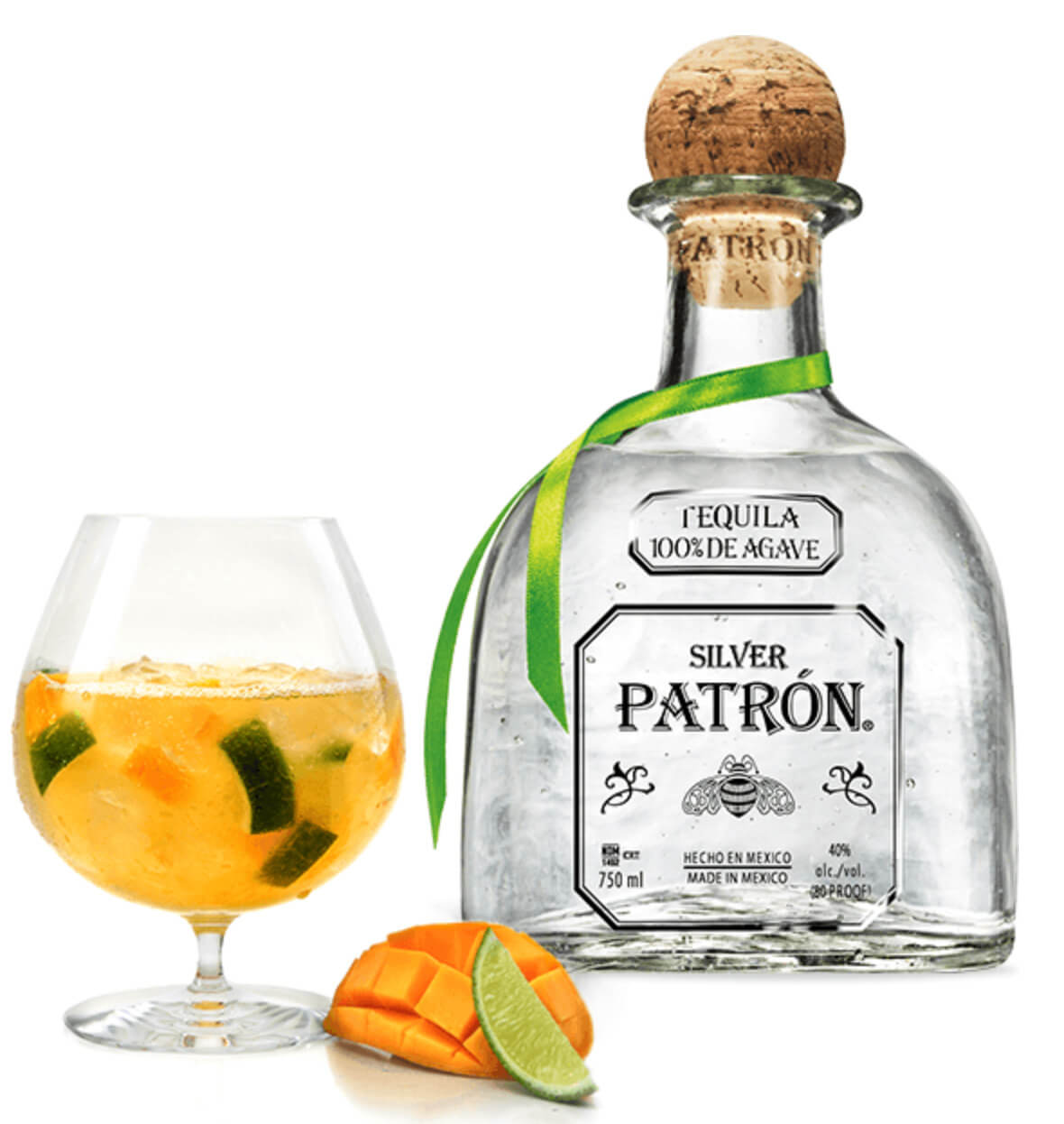
Patron Silver tequila
Technically, from my ever-useful ‘Oxford Companion to Spirits and Cocktails’, tequila is “a regionally-defined type of mezcal obtained through double distillation of fermented carbohydrates extracted from cooked or uncooked blue agave”, all defined by Mexican law NOM 006-2021. If that sounds like something you’d want to voluntarily drink, you are a better man than I am. Of course, we do, and regularly.
Alcohol content will be between 35% and 55%. The name comes from the city of Tequila, in the western Mexican state of Jalisco. I am assured that Mexicans simply see tequila as Mezcal, or at least one form of it. The rest of the world does not (even if it technically is).
First recorded as far back as the 17th century and sold in San Francisco as early as 1855, it was once advertised across the States as ‘nature’s own tonic’. My ‘Oxford Companion’ tells me that its popularity soared after the Mexican Revolution (1910-1920), becoming an icon in Mexico thanks to local cinema.
Tequila can only be produced in the NOM-delineated denomination of origin area in Jalisco and other municipalities from Guanajuato, Michoacan, Nayarit and Tamaulipas. NOM stands for Norma Obligatoria Mexicana, which is the government entity that regulates all such matters. In 1972, they chose the first Mexican ‘denomination of origin’ (think French AOC, but wider than just wines). They chose tequila.
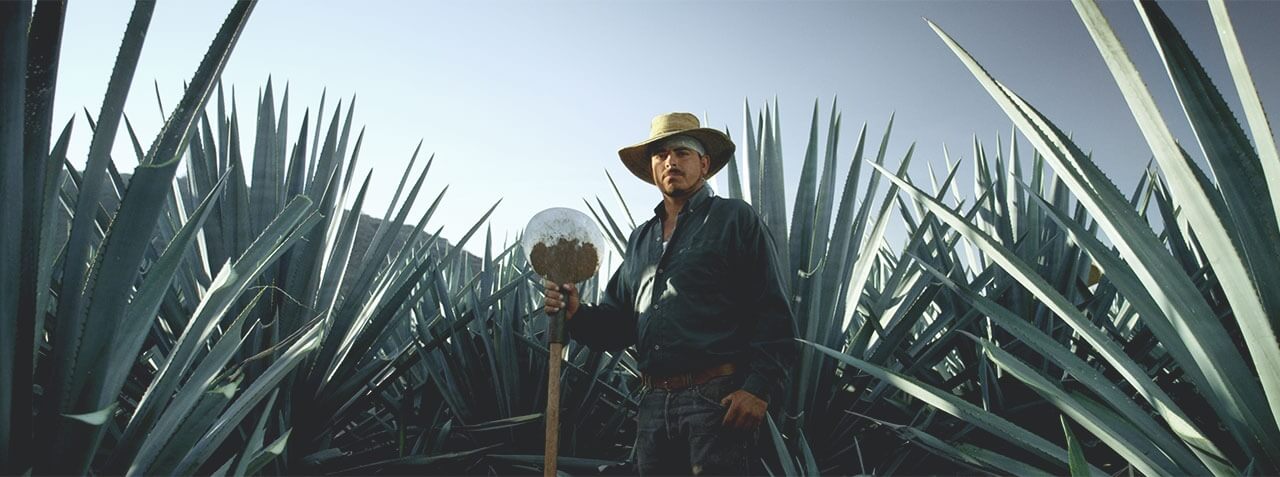
Patron blue agave plants used to make tequila
Tequila has two categories – mixto, which is 51% agave and the remainder other sources, usually sugar cane; and secondly, that which is made from 100% agave. No prizes for guessing the higher quality product.
The sub-regions of Jalisco are considered to produce especially high quality agave – Los Altos and El Centro (highlands and lowlands respectively). The lowlands provide agave plants that provide less sugar, so fermentation in is cooled systems. The highlands produce higher levels of sugar, but run the risk of freezing and damage to the plants.
Agave takes five to nine years to mature – current agricultural practices have managed to shave some time off that. The preferred production process uses oven-roasted agave. Double distillation is usual, in either copper pots or stainless steel (a few producers use column stills). The most recent figures, 2020, detail 163 certified distilleries, production of 374 million liters, with 1,758 brands registered (so forgive yourself if you come across brands with which you are not familiar). 254 million litres were shipped to the US, while Europe received less than 20% of total production.
Drinking tequila? When I was younger (and I have described elsewhere how my early experiences with tequila were not life-affirming), it was for students out on a big night, for beach parties and, if one wanted to treat it more seriously, cocktails, especially margheritas. But sipping straight? Not if you were sane.
Times change. No doubt it still fills all those roles, especially cocktails, but quality tequila has established itself as a quality spirit, worthy of sipping solo. There are numerous craft distillers of top notch tequila, and the larger players have also taken positions with great examples of the style. And none is bigger than Patron.
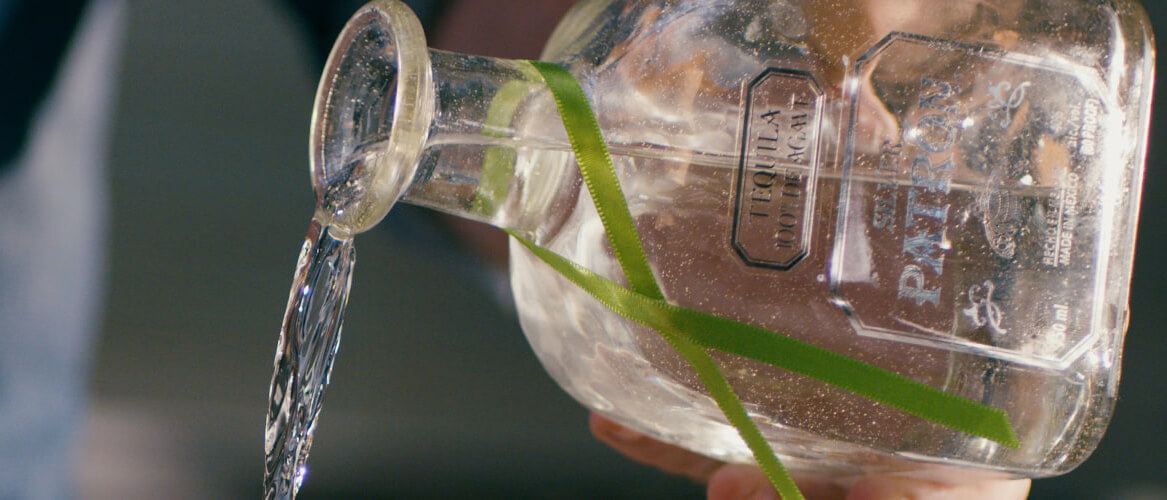
Patron tequila
Patron Tequila
Again, thanks to my ‘Oxford Companion’ (if you have any interest in spirits, you need to add this to your bookshelves), Patron Tequila is the “best-selling luxury brand of tequila in the world”, even though it only dates back to 1989. Yes, Patron was created the same year that the Berlin Wall came crashing down, Joe Montana led the 49ers to a Superbowl win over the Bengals, Bush Senior took over the White House, Boris Becker won Wimbledon, and Tom Petty was singing ‘I Won’t Back Down’.
At that time, John DeJoria, who ran a leading hair care provider, sent an architect, his friend and subsequent business partner Martin Crowley, to Mexico to buy furnishings. And to pick up some top tequila. He came back with some bottles from the Siete Leguas distillery (Casa 7 Leguas). DeJoria rather liked it and ordered ten thousand bottles (or 12,000, depending on your source), as one does. Legend has it that DeJoria was a billionaire before he took on tequila, and that came from an original $700 investment into hair, prior to which he was working as a janitor. And did I mention that he is apparently great friends with Clint Eastwood?
Legend has it that their first distribution partners were Jim Beam, but when they were told that if everything went right, they might get sales up to 20,000 cases, they walked away. They then moved to Seagram’s, but were not happy there as well, and sued to regain independence. Successfully.
This was at a time when most of the tequila available outside Mexico was the lesser mixto style. DeJoria and his architect were keen to place themselves at the top of the tequila market and launched their “Patron” at $37.95, more than twice the price of most of the tequila then on the market. They worked hard to promote it, having it featured in Wolfgang Puck’s restaurants and even getting it a spot in the Clint Eastwood movie, ‘In the Line of Fire’.
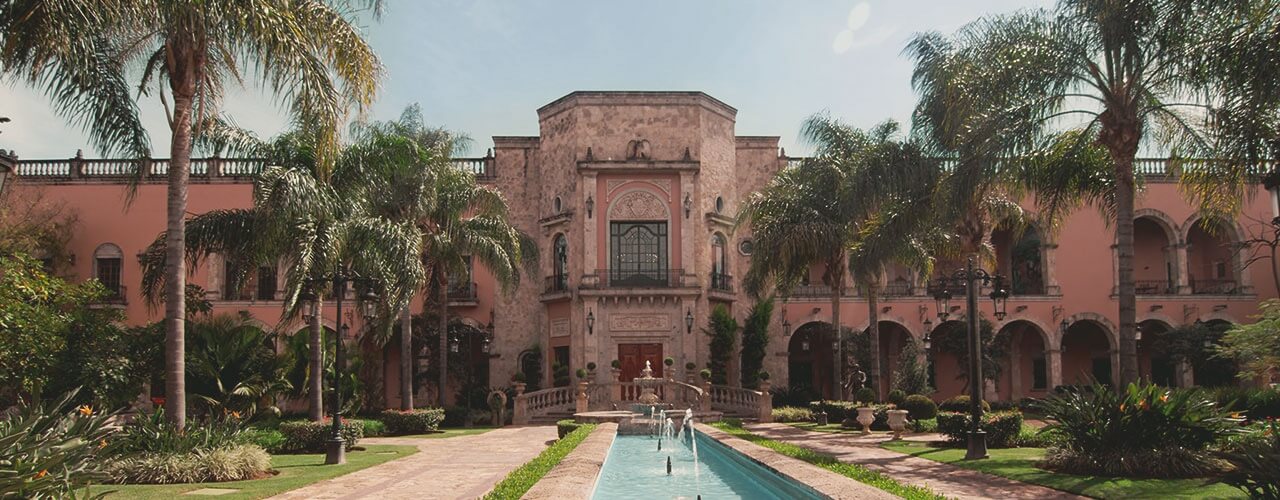
The Patron Tequila hacienda in Jalisco, Mexico
By 2002, Patron had established their own distillery in the highlands at Jalisco. They use traditional methods, including crushing the cooked agave with a giant volcanic stone wheel, known as a tahona. In the past, donkeys dragged these stones around – perhaps not the most exciting life for the animal, but these days, machines take on that task.
The squat square bottle is instantly recognisable. If you have ever wondered why there is a hornet on the label, it is because Martin Crowley once served in the US Navy on the aircraft carrier, the USS Hornet.
Some feel that along the way, the brand moved more to a celebrity favorite than a product for tequila lovers, but they must have been doing something right. In 2018, it was sold to Bacardi for US$5.1 billion. As one report suggested, Patron completely dominates the market with 1,000 competitors chasing it.
Their Anejo is part of the range of elite tequilas. Each bottle is individually numbered. It still remains popular with celebrities (well, I assume that they are celebrities, but I’ll confess that I have never heard of most of them).
Over time, with the infusion of some top people in the industry and hard work, Patron became a massive brand. Patron Silver took on vodka. Support from those celebs – they really do love their tequila – and musicians assisted greatly. By 2006, they were shifting a million cases annually. And tequila had moved up in the eyes of spirit lovers. Patron have offered a tequila in crafted Lalique decanters which now sells for US$7,500 and more. A long way from the days of lick, sip, suck.
When the financial crisis of 2008 hit, Patron was as badly impacted as any other business, but rather than follow the herd with cuts, they bulked up and, as the world emerged, Patron was stronger than ever. Forbes called it a ‘household name’ and the new distillery, built in 2002, became the impressive ‘Hacienda Patron’ (the best description I have heard for it was that it would make the perfect getaway for a Bond villain).
The small family style operation has been maintained (just expanded) and they moved to over 100 pot stills and ten tahona wheels, rather than just increasing the size of what existed. Whereas many “craft” distilleries are simply another brand created at a big distillery, the team at Patron make sure everything happens at their distillery.
By 2012, production had hit two million cases.
Francisco Alcaraz spent fifty years in the tequila industry, with more than three decades of that with Patron as Master Distiller. Indeed, it is said that he was the man behind the taste of Patron and was crucial to maintaining quality and innovation. Sadly, he passed away in 2021, a year after retiring. He was succeeded by David Rodriguez, who had worked with him for 18 years. Patron has some 1,200 employees.
In 2021, 2.9 million cases were sold in the US, 3.2 million globally.
The team have detailed the process to make Patron tequila elsewhere. They “start by selecting the highest-quality Weber Blue Agave (… the sweetest agave). After that, we cook it for at least three days in brick ovens, then we have two different processes to crush the agave: the roller mill and the tahona… Finally, we ferment the agave for more than three days in pinewood fermenters and distill using copper pot stills. In our aging room, we have 11,000 barrels of different kinds of wood that allow us to create unique blends in a natural way by combining American, French and other oaks to give a distinct flavor to each tequila.”
One point worth making is that Patron seems to suffer from the same issue as brands like Moet et Chandon from Champagne and Johnnie Walkerfrom Scotland. Far too many consumers assume, erroneously, that big can’t be any good. That is arrant nonsense of course. These producers, and others, are seriously good at what they do. There is nothing wrong with these products not being to your taste, but to suggest that they are no good simply does not hold up. If they really were such rubbish, at their prices, they would have disappeared many years ago. Sure, Patron is huge and you might, or might not like it, but their best are superb tequilas.
Patron Anejo tequila
Our focus today is on Patron’s Anejo. Fascinating to poke around various relevant blogs on the internet and get a feeling as to how the various Patron tequilas are regarded. Fair to say that many in the blogosphere (it must be a word as my spellcheck remained unmoved) find the Anejo to be their go-to Patron tequila. It is much loved, and considered to sit well ahead of some of their other tequilas. So lucky us.
What is an Anejo tequila?
There are four categories of tequila, based on the ageing (which I always find a bit ironic given that aging tequila seems near irrelevant when one compares it to other spirits like Cognac, rum and whisky).
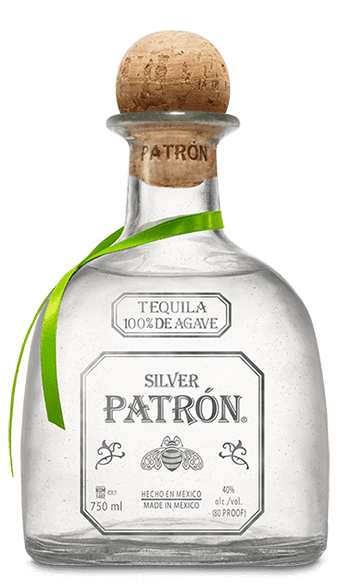
Patron Silver tequila
Silver (white) is unaged or if lucky, gets up to two months in stainless or neutral oak barrels.
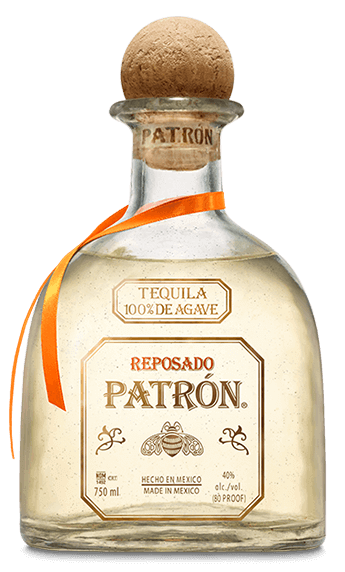
Patron Reposado tequila
Reposado (rested) receives more than two months but less than a year in oak.
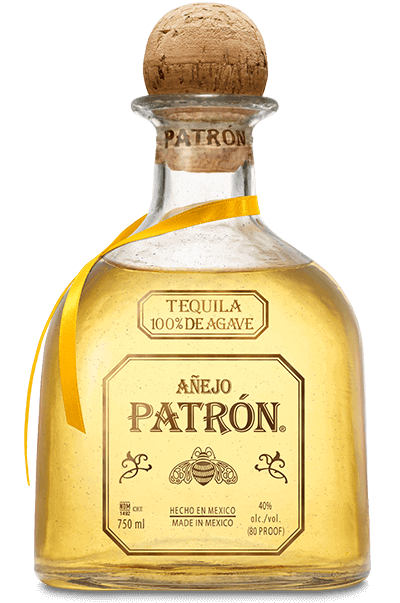
Patron Anjeo Tequila
Anejo (aged) spends between one and three years in oak of 200 liters or more, up to 600 liters (most are aged in 200-liter barrels). This can give a colour to the tequila leading some to mistake it for tequila gold, which is unfortunate as tequila gold is a product of far less quality than a good Anejo. Many of the barrels have seen prior use in Canadian or American whisky distilleries. Apparently, Jack Daniels is a popular source. After the year in barrel, the liquid can be moved to stainless steel – this is in order to reduce evaporation before bottling.
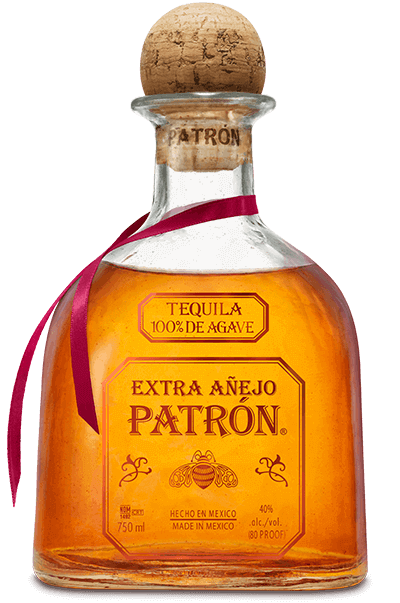
Patron Extra Anejo tequila
Extra Anejo (extra aged) spends at least three years in oak.
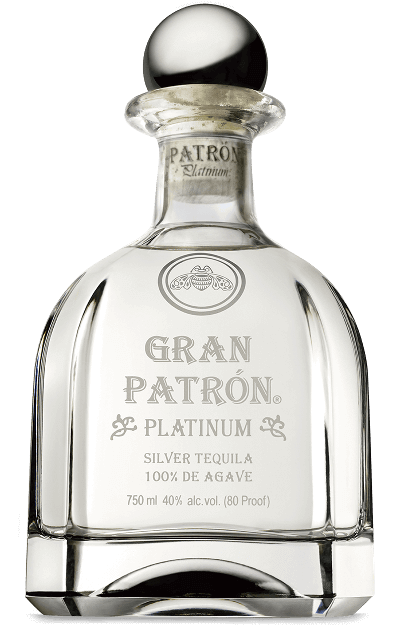
Grand Patron Platinum tequila
Grand Patron Platinum (40%, approx A$100 to $120) – This tequila sees around 15 months in oak, ex-Bourbon barrels and Hungarian oak barrels – and what a difference that makes (other reports suggest 12 months in small white French oak barrels).
A very pale gold in hue, this is a fine sipping tequila. There is an elegance and mellowness (awful word, but it hopefully conveys the impression) to this tequila that many lack. The oak is subtle, refined, slightly vanillin, but very much in balance. Indeed, balance is the key here. A mix of tropical notes and dried fruits, especially port-soaked raisins. A hint of honey, even butterscotch, on the finish. There is bite, but with it comes length of flavor and a laser-like focus. A hint of tobacco leaf and walnut here. A tequila of refinement, class and complexity. If you remain unsure of tequila, then try this one. If it does not convert you then tequila is not for you.
One thing that came out on the blogosphere was that this is not a tequila for cocktails. By that, I assume they feel you may as well use a lesser quality example and save this for sipping. Personally, if your pocket stretches far enough, use the best tequila (indeed, whatever spirit is needed) for your cocktails that you can. The better the spirit, the better the final cocktail, but if it comes down to it, then absolutely save this for sipping. For me, especially given my sub-tropical climate, Patron Anejo will be served with a small ice-cube for sipping.
For more information, please visit www.patrontequila.com/global-en/products/patron-anejo.html
You might also enjoy:
In Praise Of Great Mezcal: All Tequila Is Mezcal, But Not All Mezcal Is Tequila (And Avoid The Worm)
Fuji Japanese Whisky: Made With Naturally Filtered Snowmelt From An Active Volcano
Monkey 47 Gin: From Failed Watchmaker To Making One Of The Best Gins In The World
Leave a Reply
Want to join the discussion?Feel free to contribute!



Love it! Thanks for doing something diferent to watches once in a while!
Hi Scaramanga. thanks for the comment. but we do something non-watch every week! i have to – i know nothing about watches.
Great read, Ken, thank you.
I’ve never previously bought a bottle of tequila but I feel some additional surfing and a purchase coming on this weekend! Looks like one of the Patrons will be a good place to start.
Cheers!
good luck with it. let us know what you think.
Your thoughts on Don Juan 1942 Anejo?
Hi Stanislaw.
In truth, been a while since i have even seen a bottle of the 1842 down here, if ever, and have never tried it (i am assuming you are not talking about the rather exquisite tall bottle? that is the don julio 1942 – but i assume in any event, that you mean don julio, not don juan?).
From memory, the 1942 is another very fine tequila.
I could say it will, as it always does, come down to personal preference, but i think that the 1942 is two or three times the price of the patron. makes it a bit of an unfair fight. i’d be happy to drink either. i do recall the 1942 being a bit special though. So i guess i am sitting on the fence a bit.
i also recall tequila loving friends telling me that they preferred patron as it uses no additives at all whereas i believe that don julio does, but i may well be wrong about that.
but the don julio 1842 is about ten times the price of patron anejo. so you’d certainly expect it to be the better tequila. i am more than happy to look at the 1842 and report back if any ever comes my way.